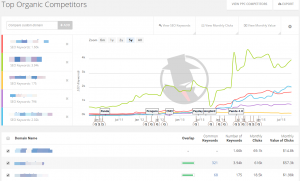![2015_3_10-large-AM-5_Last_Minute_Corporate_Tax_Filing_Tips[2]](http://cdn2.business2community.com/wp-content/uploads/2015/03/2015_3_10-large-AM-5_Last_Minute_Corporate_Tax_Filing_Tips2-360x200.png.png)
Whether we like it or not, tax season is upon us. Instead of pulling the wool over our eyes, it’s important to learn how to minimize our tax liability through legal and well-established accounting principles in order to reduce the sting of tax season.
Most corporations must file business tax returns by March 16, 2015, giving you just enough time to take advantage of these six last-minute corporate tax tips to reduce your liability and put more hard-earned cash into your pocket.
Deduct Business Property Through Section 179
It can typically take years to fully deduct the costs of business property through depreciation. However, IRS Section 179 temporarily allows small businesses to deduct the full purchase price of business property as long as the total deduction doesn’t exceed the business’ total taxable income.
This corporate tax break was created to incentivize and encourage small business owners to purchase new equipment. Under Section 179, you can deduct up to $ 500,000 from eligible business expenditures in 2014. You cannot fully take advantage of Section 179 if your business purchased more than $ 2 million of equipment in 2014, but most small businesses should qualify for this valuable deduction.
Some assets, such as real estate and business inventory, don’t qualify, but several other business assets do. If you purchased the following equipment in 2014, you can deduct the costs up to $ 500,000 under Section 179:
- Business equipment and machines
- Some business vehicles
- Computers and software
- Office furniture and equipment
- Most building fixtures
This is a temporary deduction that may not be available next year (unless it’s extended by the U.S. Congress). Therefore, you should take advantage of this valuable deduction for qualifying business expenditures during the 2014 calendar year.
File Your Taxes on Time or Get Fined
Unless your business has duly informed the IRS that it’s using a different fiscal year, C corporations and S corporations must file business taxes and pay any tax due by March 16, 2015.
Naturally, filing a tax return and paying appropriate taxes is something many cash-strapped small businesses lose sleep over. Paying taxes should be first priority, even if it means cutting other important business expenses.
There are stiff penalties for businesses that don’t file taxes by March 16. For example, the IRS will penalize S corporations $ 195 per shareholder for each month the business is late filing taxes.
You must file an informational tax return with the IRS even if your S corporation doesn’t owe tax. Additionally, if your C corporation owes taxes and doesn’t file by March 16, it will be subject to a monthly late-filing penalty of 5% of the outstanding corporate tax owed.
Pretending your tax liability doesn’t exist won’t make it magically disappear. Even if you’re strapped for cash, it’s essential to file your taxes on time or be subject to penalties that will only increase your potentially overwhelming tax burden.
If You Can’t Pay or File Your Taxes on Time, Get an Extension
The IRS isn’t as brutal as it seems; they offer a safe haven for cash-strapped and time-strapped businesses. If you can’t pay your taxes, you can request a six-month extension to file your income tax return.
To request an extension, simply fill out Form 7004 and submit it to the IRS by March 16 to receive an automatic six-month extension. If filed on time, this extension will give your business plenty of time to pay the outstanding corporate tax owed without subjecting your business to penalties or fines.
Because March 16 is only a couple months after the end of the calendar year, Form 7004 can also be useful for businesses that need more time to organize and obtain all of the information required to file a tax return.
It can take a significant amount of time to gather your business’ income, expenses, deductions and credits. The IRS knows this, and in addition to giving cash-strapped businesses more time to pay taxes, Form 7004 can also be utilized as a means to receive more time to organize all tax-related information.
Certain Businesses Can Utilize the Section 199 Deduction
Also referred to as the domestic production deduction, Section 199 allows certain businesses to deduct up to 9% from their qualified production activities income. This is a complex deduction, but if taken properly, it can be quite valuable for eligible business activities.
This deduction is primarily designed for the manufacturing industry, but can also apply to construction of real property, the performance of engineering or architectural services and even film production.
Formed by the American Jobs Creation Act of 2004, this tax break was intended to benefit domestic manufacturers and to encourage investment in domestic manufacturing rather than outsourcing to foreign countries. As long as manufacturing or anything related to manufacturing took part in the U.S., up to 9% of the income directly derived from the qualifying activities is deductible.
Consider Issuing Dividends
If you are a shareholder of an S corporation that also works for the business on a day-to-day basis, consider classifying some of your compensation as dividends in order to minimize your corporate tax burden.
For example, if you own shares in a profitable S corporation and work for the company, consider taking a reasonable salary for your day-to-day services and receiving the rest of the profits through dividends. Depending on your tax-bracket, dividends can be advantageous since they are taxed at a lower rate.
However, the IRS is aware of this avoidance tactic and can re-characterize misclassified dividends as salary and require you to pay employment taxes and penalties. The trick is that you must receive a reasonable salary for your day-to-day activities before you receive the rest in dividends. The IRS doesn’t provide any clarity, only requiring the salary to be “reasonable.”
Among other issues, the IRS can consider the duties you perform as an employee, the amount of weekly hours you work at the S corporation and comparable salaries in similar positions.
In short, you should receive a similar salary to what you would pay another person to perform a similar job.
Don’t Forget the Home-Office Deduction
If your business operated from your home in 2014, you may be eligible for a home-office deduction. The regular method for claiming a home-office deduction requires you to keep records of actual expenses based on the percentage of your home dedicated to business use. Recently, the IRS started offering a simplified option of $ 5 per square foot, up to 300 feet, for a maximum of deduction of $ 1,500.
There are two ways you can qualify for a home-office deduction: if you use a dedicated portion of your home for business purposes or if you use a dedicated portion of your home to store inventory or samples.
The first method requires you to use a portion of your home exclusively and regularly for your business. To satisfy the exclusive-use requirement, the office must be a separate room or a part of a room with a clear partition. Additionally, your home-office space must be used exclusively for business purposes and not for any personal purposes. For example, if you also use your home office as a bedroom, you may forfeit the home-office deduction.
The second method allows you to deduct home-office expenses if you use a dedicated portion of your home to store inventory or samples. For example, if you sell printers and use a portion of your garage to store inventory, you cannot deduct the entire garage, but only the portion used to store inventory.
These tips are last-minute suggestions you can use to reduce your tax burden by the March 16 filing deadline. In addition to the tips above, it’s essential to maintain proper documentation for any deduction you claim just in case the IRS comes knocking. Get ahead of the process for next year.
As long as you have proof to back up your deduction claims, your business should be on its way to reducing corporate tax liability and increasing profits.
(278)
Report Post







